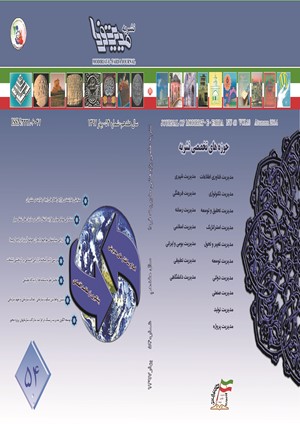بررسی ویژگیهای سازمان در طول دوره عمر آن در مراحل رشد سریع و بلوغ با استفاده از چارچوب PAEI و رویکرد پویاییشناسی سیستم
محورهای موضوعی : مدیریت استراتژیک
یعقوب فرجامی
1
,
رامین مولاناپور
2
,
فاطمه ثقفي
3
![]()
1 - دانشگاه قم
2 - دانشگاه قم
3 - دانشگاه تهران
کلید واژه: دوره عمر سازمان مدل PAEI آدیزس پویاییشناسی سیستم شبیهسازی مدیریت استراتژیک,
چکیده مقاله :
شناخت ویژگیهای سازمان در هر یک از مراحل عمر آن باعث میشود تصمیمات درستی در هر یک از این مراحل، برای حل مشکلات سازمان اتخاذ کنیم. در این مقاله با استفاده از چارچوب پیشنهادی ایزاک آدیزس (PAEI) درباره دوره عمر سازمان و روش تحلیل پویاییهای سیستم به تحلیل ویژگیها و رفتار سازمان در دورههای رشد سریع و بلوغ عمر آنها پرداخته میشود. ابتدا ویژگیهای هر یک از این مراحل به صورت جداگانه تحلیل و بررسی میشوند و سپس با استفاده از روش تحلیل پویاییهای سیستم، حلقههای بازخوردی علت و معلولی و نمودارهای حالت و جریان مربوط به این دو مرحله از دوره عمر سازمان رسم میشود. سپس خروجی مربوط به شبیهسازی مربوط به مراحل رشد سریع و بلوغ عمر سازمان در افق زمانی 100 ماهه با استفاده از نرمافزار Vensim به دست آمده است. سرانجام برای این دو مرحله از مراحل عمر سازمان، استراتژیهای مناسب برای مقابله با مشکلات آنها ارائه شده است.
Understanding the characteristics of an organization during different stages of its lifecycle help us make appropriate decisions at each stage in order for solving any problem. Employing the PAEI framework proposed by Adizes, and the system dynamics approach, we have analyzed the characteristics and behavior of an organization during the go-go and adolescence stages of its lifecycle. Moreover, using the system dynamics analysis approach, we have plotted the causal feedback loops and stock-and-flow diagrams of each stage of the organizational lifecycle. Then, the output of the simulations of 100 months of the go-go and adolescence stages of the organizational lifecycle performed in the VENSIM software are obtained .Finally appropriate strategies have been proposed for tackling the problems that the organization may face in each stage of its lifecycle.
#Adizes I., Managing Corporate lifecycles: How organization grow, age and die, Embassy Books, 2014.
Adizes, I., Organizational Passages- Diagnosing and Treating Lifecycle Problems of Organizations, Organizational Dynamics, 1979#.
#Adizes, I., Corporate lifecycles: How and why corporations grow and die and what to do about it, 1990.
Barlas, Y., Formal aspects of model validity and validation in system dynamics, System dynamics review, Vol. 12, No. 3, (Fall 1996): 183-210#
DL Lester, JA Parnell, S Carraher, Organizational life cycle a five stage empirical scale International Journal of Organizational (Analysis (2003.#
Hu B., Zhang D., Ma C., Jiang Y., Hu X., Zhang J., Modeling and simulation of corporate lifecycle using system dynamics, Simulation Modelling Practice and Theory 15 (2007) 1259–1267.#
Jawahar M. and Gary L. Mclaughlin, Toward a Descriptive Stakeholder Theory: an Organizational Life Cycle Approach, Academy of management Review (1998).#
Ken G. Smith, Terence R. Mitchell and Charles E. Summer, Top Level Management Priorities in Different Stages of the Organizational Life Cycle Academy of management Review (1985).#
#Mintzberg H., Power and organization life cycles, The Academy of Management Review, 9(2), 207-224, 1984.
Nazzari S., Foroughi H., Organization’s changes through its lifecycle; a system dynamics approach (2007).#
Robert E. Queen, Kim Cameron, Organizational lifecycle and shifting criteria for effectiveness, Management Science, Vol. 29 , no.1, 1983.#


